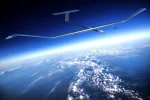A £1m British Army Watchkeeper drone had to be scrapped after crashing at an airfield in Wales when the ex-RAF officer piloting it disabled the unmanned aerial vehicle's anti-crash systems.
Although the official main cause of the accident was given as the automated Vehicle Management System Computer functioning “as designed but not as intended”, the drone's crew had agreed to select the Watchkeeper's Master Override function.
The drone, tail number WK031, was scrapped as a result of its November 2014 crash. The Ministry of Defence released its report into the crash today.
After the crew had disabled various anti-crash routines the drone incorrectly sensed its altitude and flopped into the runway of West Wales Airport, near Aberporth. The first the drone's operators knew about it crashing was when the airfield's crash klaxons began sounding.
Nobody was injured and no damage was caused, other than to the drone itself.
During the flight the drone's crew were sat inside the Ground Control Station and using the Watchkeeper's on-board cameras and GPS systems to monitor where it was. Unlike other drones, such as the MQ-9 Reaper, the Watchkeeper cannot be flown manually, in the “stick and rudder” sense. Its crew must instead set waypoints on a computer screen for it to fly to.
“If the crew see cloud ahead and wish to avoid it, they must first approximate the position of the cloud, move the fly-to point and send the command to the UAV,” said the crash report. “This... can make it difficult for a UAV crew to always remain clear of inclement weather.”
The Service Inquiry into the accident found that the drone's civilian operators, experienced former military aviators who were carrying out a training flight designed to exercise the pilot and the surveillance systems operator, were worried about an incoming thunderstorm. Even as the training programme ended and the drone began flying back to base, the operators received indications that the Watchkeeper's flight instruments were occasionally malfunctioning – including its barometric pitot tube, which indicates height.
The Watchkeeper has four ways of determining altitude: barometric altitude, from the pitot tube; GPS altitude from its location unit; radar altitude, from the Watchkeeper system's ground radar unit; and its on-board laser altimeters, which are only used in landing. If the readings from these four sources disagree while the drone is landing, it is programmed to automatically abort the landing, but the operators can override this function.
Rather than risk the drone's Automatic Take-Off and Landing System (ATOLS) aborting its landing and flying the £1m aircraft around the airport's circuit again, which could have resulted in it being destroyed by heavy winds and rain, the crew selected Master Override (MO) in the hope they could get it back on the ground as quickly as possible.
“The AO
[Authorising Officer, the instructor supervising the Watchkeeper's systems operator] then asked the crew what they could do to guarantee that the UAV would land from its first approach. The UAV-p1
[handling pilot] stated the MO could be used, and the AO agreed,” said the crash report.
There was no suggestion in the report that the pilot was culpable for the drone's crash. Its four man crew all agreed that using the MO was the best way to get it down first time. Use of the MO was widespread amongst Watchkeeper crews at the time of the crash, the report said.
Master Override would have allowed the ATOLS to land the Watchkeeper while ignoring “landing abort” conditions, such as laser altimeters disagreeing with the rest of its systems. This was a known problem in rainy weather where wet runways interfered with the laser beam and caused the system to give false readings, in turn causing ATOLS to abort the landing.
Crucially, if Master Override is activated and one of the altimeters is malfunctioning, the Watchkeeper opens up its “ground touch” window from 1m sensed altitude to 20m sensed altitude. In other words, the drone might decide it has landed even when it is still 65 feet up. Once the on-board computer decides the Watchkeeper has made contact with
terra firma, it is programmed to select full downwards pitch – in manual piloting terms, the equivalent of pushing forward hard on the stick - to help slow the aircraft. Thus WK031 met the ground far harder than it was ever designed to do.
The investigating panel concluded that a sudden gust of wind, or air turbulence whipped up by the incoming storm, caused the Watchkeeper to think it had made contact with the ground. In reality the sudden gust caused its sensors to read as if its vertical acceleration and pitch rates had suddenly changed in the same way as if it had touched down. The 20m “ground touch” window allowed its on-board logic to pitch it down sharply even though it was still airborne at that point.
“Lessons from this accident are already being taken forward that will improve safety of the Watchkeeper UAV,” wrote Air Marshal Dick Garwood, director general of the Defence Safety Authority.
An October 2015
report from the Bureau of Investigative Journalism found that of the Ministry of Defence's 54 drones on order from French firm Thales, just 33 had been delivered at that point and only three had been used on active operations. The full programme is costing taxpayers £1.2bn, some £400m more than the price tag announced at its beginning in 2005

 Pirullinen kapistus.
Pirullinen kapistus. 






